If you’re looking for an easy and efficient way to spray your garden plants with water or pesticide, a garden sprayer is the tool for you. Garden sprayers come in manual and powered varieties, and can be made from plastic, metal, or even bamboo. In this comprehensive article, we will answer some of the most common questions about how to use a garden sprayer. We’ll also provide some helpful tips on choosing the right model for your needs, filling it with the right amount of liquid, and spraying evenly and accurately. Let’s get started!
Suitable for…
One of the most common questions people have about garden sprayers is what type of liquids they can be used for. The answer to this question depends on the material your sprayer is made from. Plastic and metal garden sprayers are usually only suitable for water, while bamboo or other natural materials can be used for both water and pesticide.
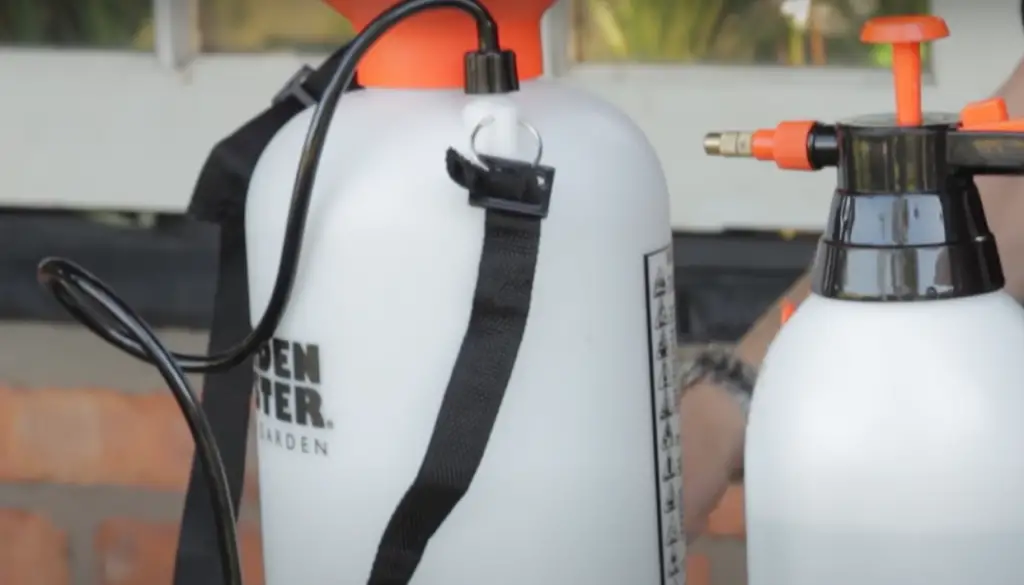
If you’re unsure about whether your sprayer is suitable for a particular liquid, always check the manufacturer’s instructions before using it.[2]
Filling Your Sprayer…
When it comes to filling your garden sprayer, there are a few things you need to keep in mind. First, make sure you only fill it with the amount of liquid you need for the task at hand. Overfilling your sprayer can make it heavy and difficult to use, and may also cause leaks. Second, be careful not to get any liquids on the outside of the sprayer, as this can damage the paint or finish. Finally, always screw the lid back on tightly after filling to prevent leaks.
With these tips in mind, you’re now ready to start using your garden sprayer like a pro! Just remember to take regular breaks so that you don’t get too tired, and to clean your sprayer after each use. With a little practice, you’ll be spraying like a pro in no time!
Safety precaution
Before using your garden sprayer, it is important to take some safety precautions. Make sure that you read the manufacturer’s instructions carefully before using the sprayer. In addition, wear protective clothing, such as gloves and a mask, when using the garden sprayer.
To fill the garden sprayer, first remove the lid of the tank. Then, fill the tank with water and add the desired amount of pesticides or herbicides. Finally, replace the lid of the tank and screw it on tightly.
After filling the tank with water and pesticide, it is time to pump up your garden sprayer. To do this, first make sure that the valve at the top of the pump is in the “off” position. Then, pump the handle of the garden sprayer up and down until you feel resistance.[2]
How to use a garden sprayer
If you’re new to using a garden sprayer, don’t worry – it’s actually very simple! Just follow these steps and you’ll be an expert in no time.
To start, fill your garden sprayer with the desired amount of water. Next, add the appropriate amount of pesticide, herbicide, or other solution that you’ll be using. Be sure to follow the instructions on the product label.

Once you’ve added the solution to the water, screw on the pump assembly and prime the pump by pressing down on the handle until resistance is felt. Then, simply point and spray in the direction of your target area!
Keep in mind that most garden sprays will need to be reapplied every few weeks in order to be effective. And that’s it – you’re now a pro at using a garden sprayer![2]
There are a few things to keep in mind when using a garden sprayer, such as:
- Be sure to read the instructions on the product label before use.
- Wear protective clothing, including gloves and a mask, when handling pesticides or other chemicals.
- When applying herbicides, it’s best to do so early in the morning or late in the evening when temperatures are cooler.
- If you’ll be spraying near desirable plants, cover them with plastic or tarp beforehand to protect them from overspray.
Following these tips will help you use your garden sprayer safely and effectively.
Different types of garden sprayers
The first thing you need to know is that there are different types of garden sprayers. The type of garden sprayer you need will depend on the job you’re going to be doing.
Pump sprayers are the most common type of garden sprayer. They’re easy to use and relatively inexpensive. Pump sprayers come in a variety of sizes, so you can choose one that’s right for the job you’re doing.
Backpack sprayers are larger than pump sprayers and are ideal for larger jobs. They can be more expensive than pump sprayers, but they’ll save you time and effort in the long run.
Battery-operated sprayers are the most expensive type of garden sprayer, but they’re also the most convenient. They’re perfect for small jobs or for those who don’t want to deal with the hassle of a pump or backpack sprayer.[2]
Getting the right spray
The first thing you need to do is get the right sprayer for your garden. There are a few things to consider when choosing a garden sprayer:
- The size of your garden
- The type of plants you have
- The amount of water you need to deliver
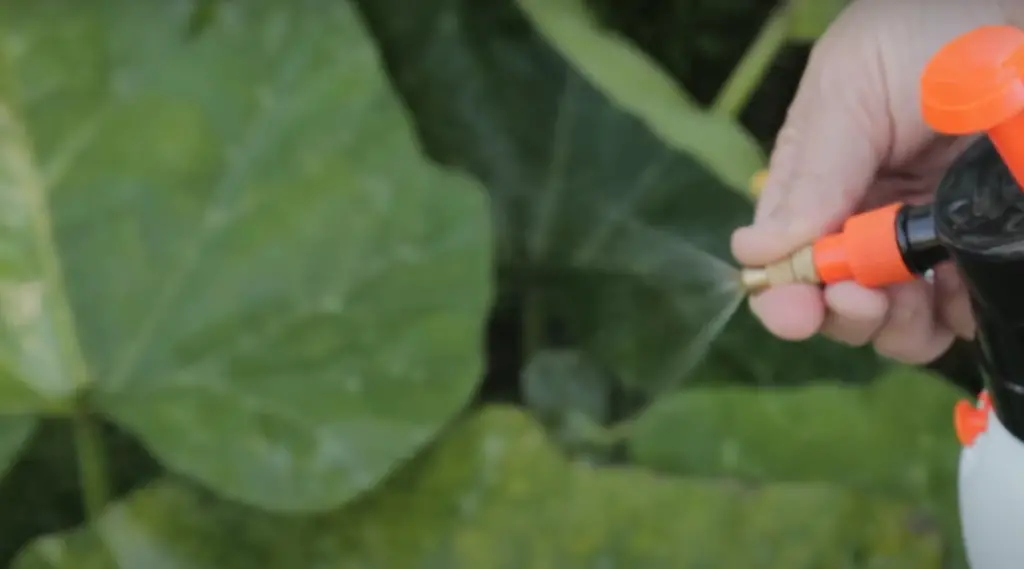
If you have a small garden, then a hand held pump sprayer would be ideal.
Tips for effective use of garden sprayers
To get the most out of your garden sprayer, follow these tips:
- Read the manufacturer’s instructions carefully before using the sprayer. This will ensure that you are using it correctly and safely.
- Always test the sprayer on a small area before using it on your entire garden. This will help you to avoid any potential problems.
- When using pesticides, always follow the directions on the label. This will help to keep you and your family safe from harmful chemicals.
- Be sure to clean the garden sprayer thoroughly after each use. This will prevent any build-up of chemicals which could be harmful to you or your plants.[2]
How to use a pump sprayers
Pump sprayers are great for small to medium sized gardens and yards. They are easy to use and can be filled with a variety of different liquids such as herbicides, pesticides, and fertilizers.
To use a pump sprayer, simply pump the handle up and down to build pressure in the tank. Then, pull the trigger to release the liquid onto your plants or lawn. Be sure to hold the nozzle about 12 inches away from whatever you’re spraying.
When you’re finished using the pump sprayer, release any remaining pressure in the tank by pressing down on the valve at the top of the unit. This will prevent any accidental leaks or spills. Finally, rinse out the tank with clean water to remove any residual chemicals.[2]
Pump sprayers are a great way to quickly and easily apply liquids to your garden or lawn. With just a few simple steps, you can be on your way to a healthy and beautiful outdoor space.
How to Use a Garden Sprayer for Paint
Water-based paint
If you’re using a water-based paint, mix the paint with water in the garden sprayer following the instructions on the paint tin. Once you’ve added the correct amount of water, screw on the lid of the garden sprayer and shake it well to make sure the paint is mixed thoroughly.
To start painting, unscrew the nozzle of your garden sprayer so that air can enter. This will help create an even flow of paint when you start spraying. Place your finger over the hole at the top of the nozzle and pump the handle of your garden sprayer up and down until you feel resistance. This means there’s enough pressure in the tank to start spraying.
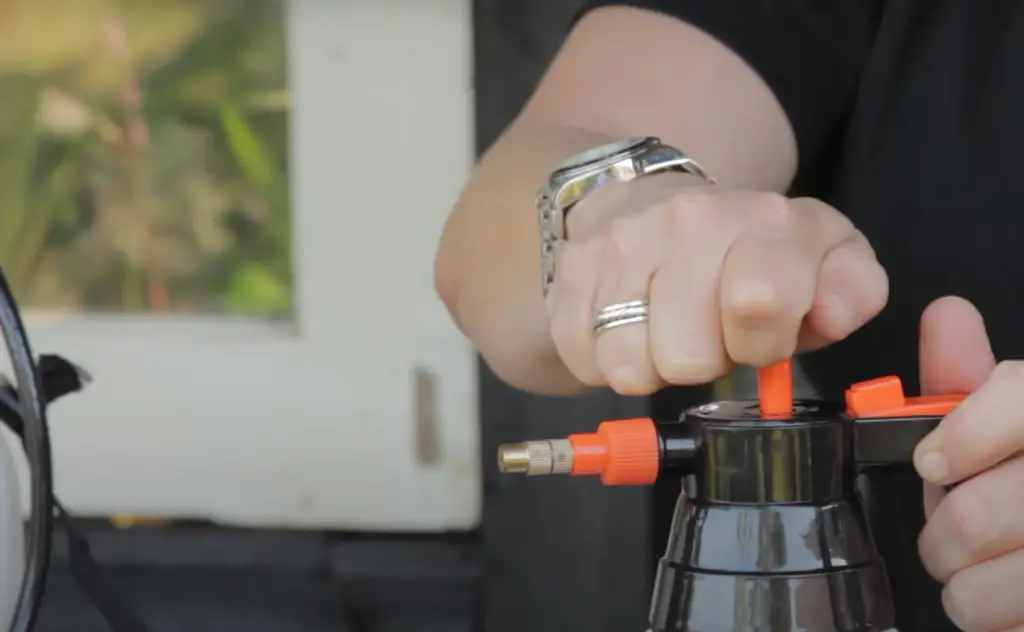
Now point your garden sprayer towards the surface you’re painting and release your finger from the hole at the top of the nozzle. Move the garden sprayer smoothly backwards and forwards as you paint, overlapping each stroke so that you don’t miss any areas.
When you’ve finished painting, screw the nozzle back on to your garden sprayer to prevent any paint from leaking out. give your garden sprayer a good shake before storing it away to make sure all the paint is mixed together correctly.[1]
Oil-based paint
If you’re using an oil-based paint, you’ll need to add a solvent such as mineral spirits or paint thinner to the mixture. The ratio of paint to solvent will vary depending on the type of paint you’re using, so be sure to consult your manufacturer’s instructions. Once you’ve added the solvent, shake the garden sprayer thoroughly to mix everything together.
You should always test your sprayer on a scrap piece of wood or cardboard before applying it to your project surface. This will help ensure that the paint is being applied evenly and avoid any unwanted surprises.
When you’re ready to start painting, begin by holding the garden sprayer about 12 inches away from the surface. Apply even pressure to the trigger and move the sprayer steadily back and forth as you work. Overlapping each stroke by about 50% will help ensure that you don’t miss any spots.
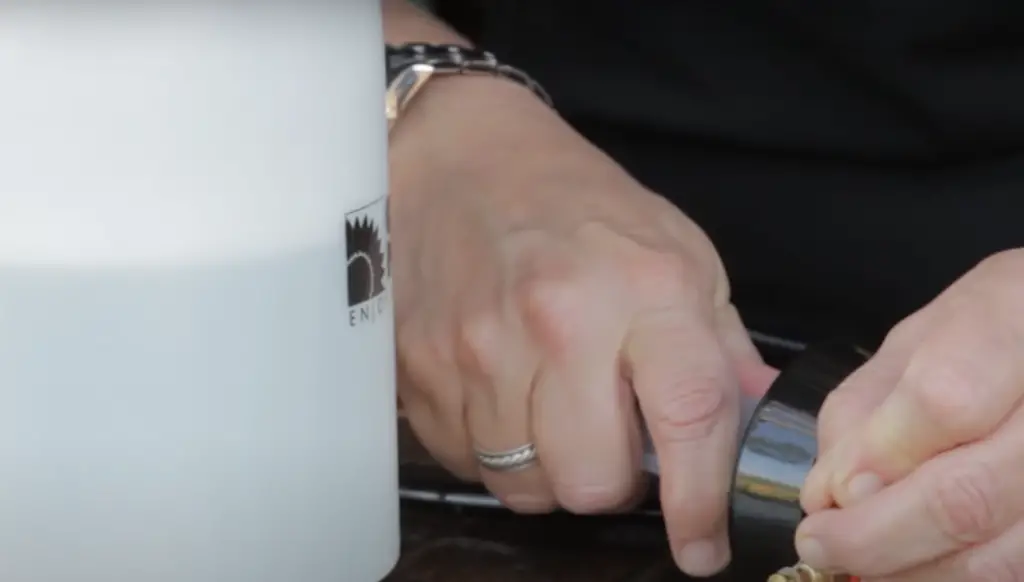
Once you’ve finished painting, clean the garden sprayer immediately to avoid clogs and build-up. Simply flush it out with water and then run some more water through the system to rinse away any residual paint. Be sure to also clean the nozzle, as this is where most clogs occur.
With these tips in mind, you’ll be able to use your garden sprayer with confidence!
FAQ
How much pressure should a pump sprayer have?
Most pump sprayers have a pressure of around 60 psi, but this can vary depending on the model. Check the manufacturer’s instructions to be sure.
How do you release pressure from a pump sprayer?
If you need to release pressure from your pump sprayer, simply open the valve on the top of the tank. Doing this will allow any pressure that has built up inside the tank to escape. You may hear a hissing noise as the pressure is released. Once the pressure has been relieved, you can close the valve and continue using your sprayer as normal.
It’s important to release any pressure that has built up in your pump sprayer on a regular basis. This will help to extend the life of your sprayer and prevent any potential accidents from happening.
How do you get a sprayer to work?
There are a few things you need to do to get your garden sprayer working properly. First, make sure that the tank is filled with the correct amount of water. Next, add the appropriate amount of chemicals or pesticides to the tank. Finally, assemble the pump and nozzle according to the manufacturer’s instructions.
Once you have everything assembled, prime the pump by pressing down on the plunger a few times. This will get rid of any air bubbles in the system and get the pump started. To start spraying, simply press down on the trigger located on the handle.
Why does my garden sprayer not work?
This is a common question that gardeners have. There are a few reasons why your garden sprayer might not be working properly. The most common reason is that the pump is not primed correctly. To prime the pump, you will need to fill the tank with water and then Pump the handle up and down until a steady stream of water comes out of the nozzle.
Another reason why your garden sprayer might not be working properly is because there is something blocking the nozzle. This can be easily fixed by cleaning the nozzle with a small brush or compressed air.
Why is my airless sprayer leaving lines?
There are a few reasons this might be happening:
- The airless sprayer tip is worn out and needs to be replaced
- The material you’re using is too thick
- You’re holding the sprayer too close to the surface
- The pressure on the pump is set too high
If you think it might be the first two issues, try thinning out your material or replacing the tip. If it’s one of the latter two issues, back up slightly and/or lower the pressure. You might also want to try a different nozzle size.
How do you know if a spray tip is worn?
If your garden sprayer isn’t working as well as it used to, or you’re not getting the results you want, it might be time to check the condition of the spray tip. Over time, the metal can wear down and become less effective. You can tell if a spray tip is worn if the stream of water coming out is weaker than usual, or if it’s not spraying as far. If you think your spray tip might be worn, it’s best to replace it with a new one.
Why am I getting tails when spraying?
This is a common problem that can be caused by several things. The most common cause is incorrect nozzle placement. Make sure the nozzle is placed correctly on the hose-end of the garden sprayer. Another possible cause is an air leak in the hose. Inspect the hose for any cracks or holes. If you find a leak, replace the hose. Finally, make sure you are using the correct pressure setting on your garden sprayer.
If you’re still having problems with tails, try one of these troubleshooting tips:
- Try a different size nozzle tip.
- Clean the filter screen on your garden sprayer.
- Check for kinks in the hose. Straighten out any kinks you find.
- Make sure the hose is properly connected to the pump.
I hope these tips help you get your garden sprayer working properly. If you have any other questions, feel free to leave a comment below and I’ll do my best to answer them.
Useful Video:How To Use Pressure Spray Bottles For Gardening
Conclusion
If you’re still not sure how to use a garden sprayer, don’t worry – we’ve got you covered! Check out our comprehensive guide below. With our help, you’ll be an expert in no time!
Still have questions? Feel free to reach out to us and we’ll be happy to help. In the meantime, happy gardening!
References:
- https://www.hunker.com/13413005/how-to-use-a-garden-sprayer-for-paint
- https://www.rhs.org.uk/prevention-protection/chemicals-using-a-sprayer





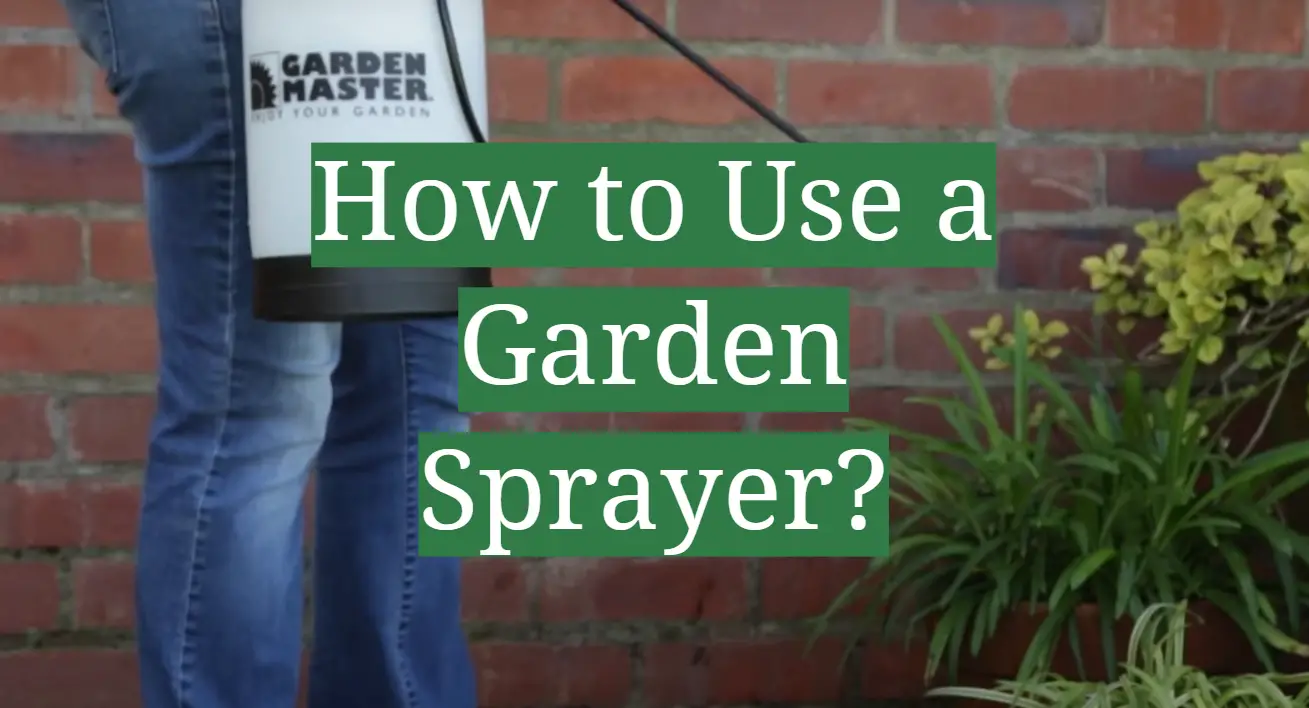




Leave a Reply
View Comments